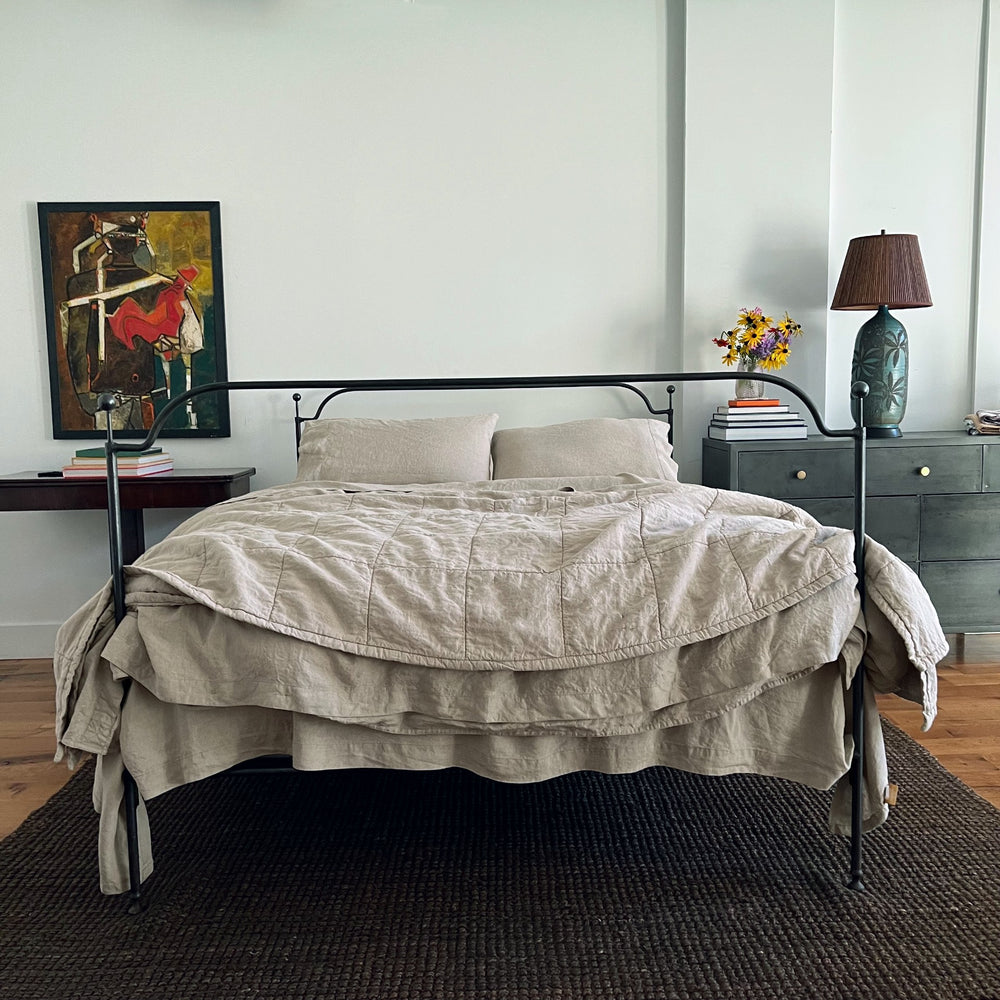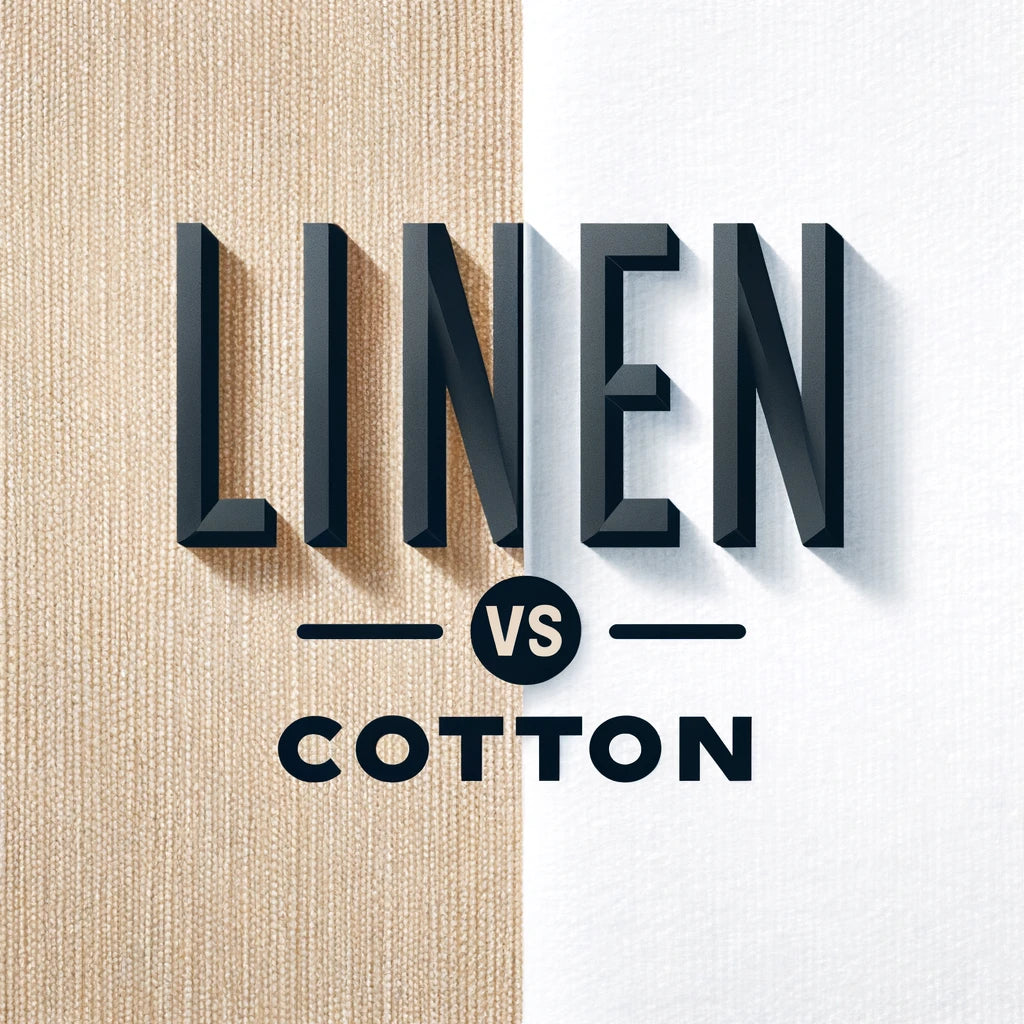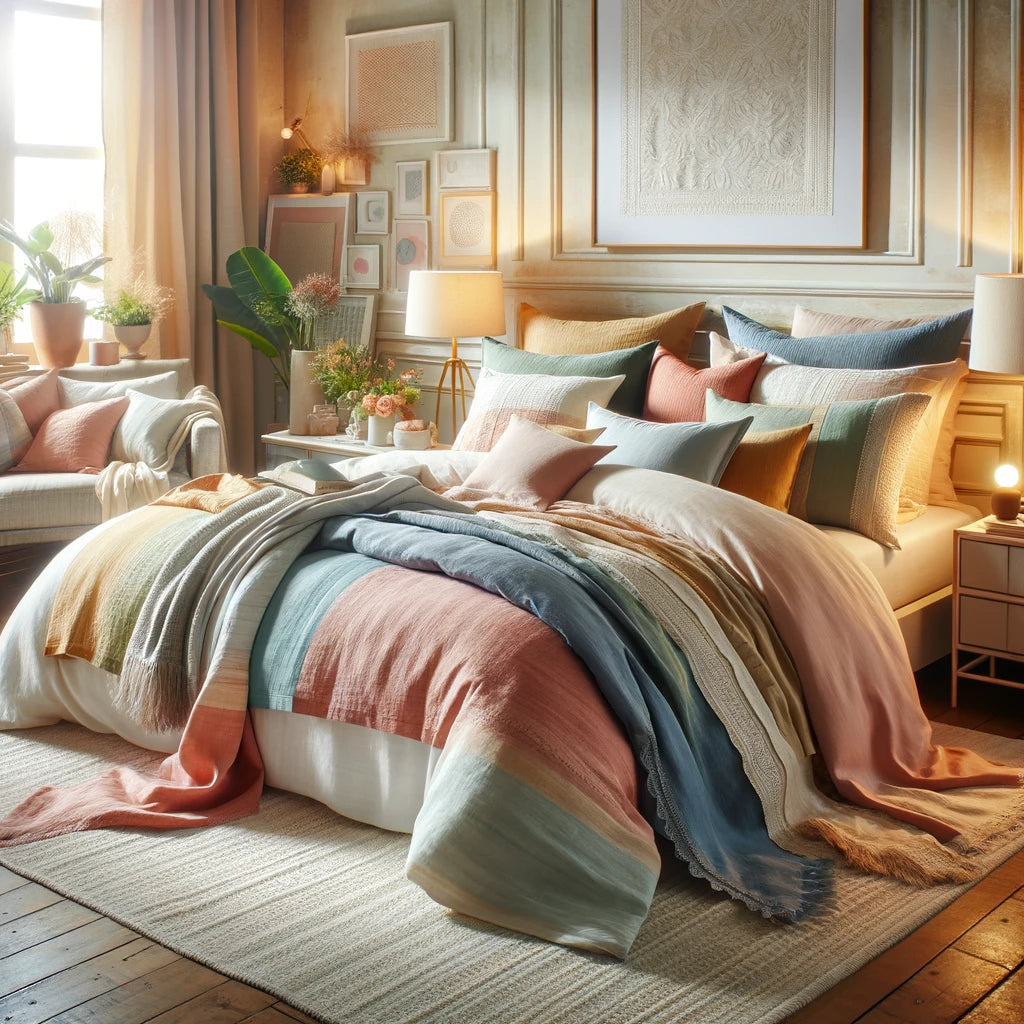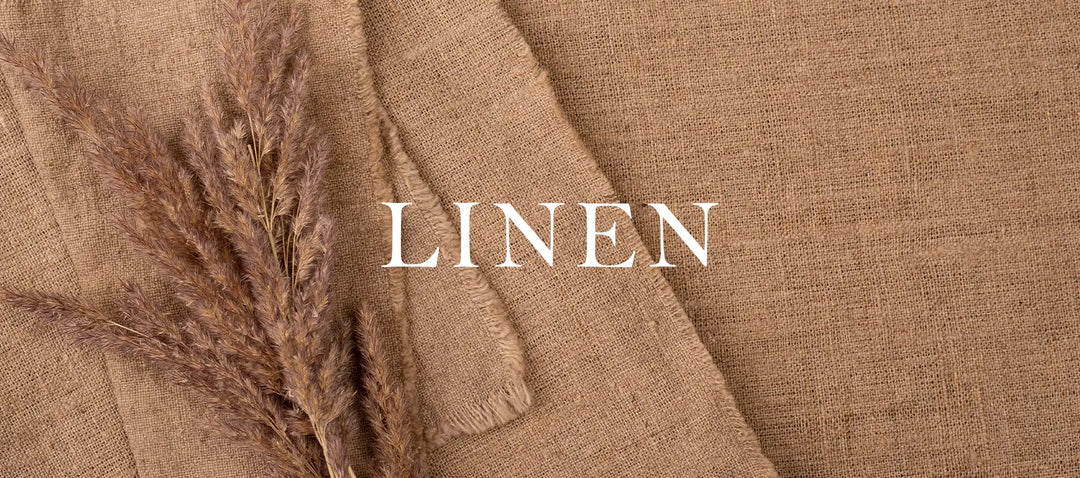Linen Vs Cotton: Which is better in 2024?
Keytake aways:
-
Origins and Heritage: Cotton and linen both have ancient roots, with cotton dating back to civilizations like India and Egypt, and linen to Mesopotamia and Egypt.
-
Comfort and Texture: Cotton is celebrated for its softness and immediate comfort, while linen offers a unique, breezy feel that becomes softer over time.
-
Breathability and Climate Adaptability: Linen excels in breathability and moisture-wicking, making it ideal for hot climates. Cotton is breathable but can retain moisture, which might be less comfortable in humid conditions.
-
Durability and Care: Linen is extremely durable and maintains its strength over time but requires more care to handle its natural wrinkles. Cotton is easier to maintain but may wear down faster.
-
Cost and Value: Cotton is more affordable and widely accessible, making it a practical choice for daily use. Linen, though more expensive, offers durability and a timeless appeal that can justify the higher cost.
-
Environmental Impact: Linen is more sustainable, requiring less water and chemicals compared to cotton, which is often heavily treated with pesticides and requires significant water usage.
-
Style and Versatility: Cotton provides vast versatility in fashion and home decor, suitable for various styles and functions. Linen is often associated with a relaxed and elegant aesthetic but is versatile enough to be styled for different looks.
-
Overall Considerations: The choice between cotton and linen depends on individual preferences for comfort, style, maintenance, cost, and environmental impact. Both materials have their unique benefits, making them valuable in different aspects of daily life and fashion.
Fabric Showdown : Linen Vs Cotton
As we stride into 2024, the age-old debate between linen and cotton continues to captivate the minds of fashion enthusiasts and comfort seekers alike. These two natural fibers have graced our wardrobes and homes for centuries, each boasting its own unique set of characteristics and advantages. However, in a world where sustainability, versatility, and overall well-being have become paramount, the question arises: which fabric will reign supreme in 2024? Let's delve into the intricacies of linen and cotton to determine the victor in this ultimate showdown.
| Properties | Linen | Cotton |
|---|---|---|
| Origin or Source | Flax Plant (composed of flax fibers) | Cotton Plant |
| Texture | Rough-textured | Smooth-textured |
| Weight | Heavier | Lightweight |
| Breathability | Highly breathable | Less breathable |
| Structural Integrity | More durable and softer after several washes | Less durable and softer after washes |
| Hypoallergenic | More hypoallergenic | Less hypoallergenic |
| Quick-drying and Temperature Regulation | Dries quickly and strongly regulates temperature | Takes longer to dry and has no moisture-wicking properties |
| Longevity | Can last up to 30 years | Can last up to 5 years |
The Origins: Nature's Gifts

Before we dive into the nitty-gritty, let's take a moment to appreciate the natural origins of these beloved fabrics:
Cotton: Derived from the fluffy fibers enveloping the seeds of the cotton plant, this fabric has been a staple in human civilization for thousands of years, dating back to ancient civilizations like India and Egypt.
Linen: Born from the strong and resilient stalks of the flax plant, linen has been woven into the tapestry of human history since the dawn of time, with evidence of its use dating back to ancient Mesopotamia and Egypt.
Comfort and Feel: Embracing Nature's Touch
When it comes to comfort and feel, both linen and cotton offer distinct experiences that cater to different preferences:
Cotton: Known for its unparalleled softness and gentle touch, cotton has become a beloved choice for everyday wear, from cozy t-shirts to luxurious bedding. Its smooth and supple texture makes it a go-to for those seeking an immediate sense of comfort and familiarity.
Linen: Initially crisp and cool to the touch, linen softens with wear, offering a breezy and airy feel that is perfect for warm weather. Its unique texture and drape create a relaxed and effortless elegance, making it an ideal choice for those seeking both comfort and style.
Breathability and Temperature Regulation: Keeping Cool and Cozy
In the era of climate change and rising temperatures, breathability and temperature regulation have become crucial factors in our choice of fabrics:
Cotton: While breathable and capable of allowing air circulation to keep you cool, cotton's ability to wick moisture away from the body can be somewhat limited, potentially leading to a damp and sticky feeling in humid conditions.
Linen: Linen truly shines when it comes to breathability. Its hollow fibers and unique weave structure allow for exceptional airflow and moisture-wicking capabilities, making it an ideal choice for hot and humid climates. Linen's ability to regulate temperature ensures you stay cool and comfortable during the warmest of days while also providing insulation in cooler temperatures.
Durability and Wrinkling: Embracing Nature's Imperfections
Longevity and ease of maintenance are key considerations when investing in quality fabrics:
Cotton: Reasonably strong and durable, cotton can withstand regular wear and tear, but it may lose its shape and become prone to pilling over time. It wrinkles moderately, requiring occasional ironing or steaming to maintain a crisp appearance.
Linen: Incredibly strong and long-lasting, linen fibers are renowned for their resilience and ability to withstand the test of time. However, linen's wrinkles are an inherent part of its charm, lending a relaxed and lived-in appeal. While some may view this as a drawback, linen enthusiasts embrace these natural creases as a testament to the fabric's authenticity and character, often opting for a more casual and effortless look.
Care and Maintenance: Simplicity or Sophistication?
The ease of care and maintenance can significantly influence our fabric choices in our busy, modern lives:
Cotton: Cotton is generally a low-maintenance fabric, easily machine washable and quick to dry. Its versatility and accessibility make it a practical choice for everyday wear and household items.
Linen: While some linen products are machine washable, others may require a more delicate approach, such as dry cleaning or hand washing. Linen's wrinkles can be easily refreshed with light steaming or misting, but ironing may be necessary for a more polished look. This added attention to care is a small price to pay for the luxurious feel and timeless elegance of linen.
Price Point: Accessibility vs. Indulgence
The cost of a fabric can be a determining factor for many consumers:
Cotton: Generally more affordable and widely available, cotton caters to a broad range of budgets, making it an accessible choice for everyday wear and home textiles.
Linen: Due to the labor-intensive extraction process and the limited availability of flax crops, linen often carries a higher price tag. However, this premium cost is a reflection of the fabric's exceptional quality, durability, and timeless appeal, making it a worthwhile investment for those seeking luxury and longevity.
Sustainability and Eco-Consciousness: A Greener Future
As we become increasingly aware of our environmental impact, the sustainability of our fabric choices has taken center stage:
Cotton: While cotton is a natural and biodegradable fiber, conventionally grown cotton can be water-intensive and often relies heavily on pesticides and harmful chemicals, contributing to environmental degradation.
Linen: Linen's production process is inherently more sustainable and eco-friendly. The flax plant requires significantly less water and pesticides, and the entire linen manufacturing process has a lower carbon footprint compared to cotton. Additionally, linen is biodegradable and can be easily composted at the end of its life cycle, making it a more responsible choice for conscious consumers.
Style Versatility: Effortless Elegance vs. Casual Chic
Both linen and cotton offer a wide range of styles and applications, catering to diverse fashion sensibilities:
Cotton: With its vast array of weaves, weights, and colors, cotton offers unparalleled versatility in fashion and home textiles. From crisp button-downs to cozy sweaters, from lightweight curtains to plush towels, cotton's adaptability knows no bounds.
Linen: While often associated with elegant and relaxed styles, linen's natural drape and texture lend themselves beautifully to a wide range of garments and home decor items. From breezy summer dresses to tailored trousers, from luxurious bedding to sophisticated table linens, linen exudes an effortless sophistication that transcends trends.

The Verdict: Striking the Perfect Balance
In the grand scheme of things, there is no definitive winner in the linen vs. cotton debate. Both fabrics offer unique advantages and cater to different needs and preferences. The key lies in striking the perfect balance within your lifestyle and wardrobe.
For those seeking softness, affordability, and low-maintenance convenience, cotton may reign supreme as an everyday staple. However, for those who prioritize breathability, temperature regulation, and a commitment to sustainability, linen emerges as the champion, offering unparalleled comfort and eco-consciousness.
Ultimately, the true beauty lies in the ability to embrace both fabrics harmoniously. A versatile wardrobe might consist of soft cotton t-shirts for casual comfort, complemented by breezy linen dresses or pants for warm weather elegance. In the home, plush cotton towels can coexist with luxurious linen bedding, creating a sanctuary of comfort and sophistication.
As we move into 2024 and beyond, the world demands more than just aesthetic appeal; it calls for conscious choices that prioritize our well-being and the well-being of our planet. By embracing the strengths of both linen and cotton, we can strike a perfect balance, indulging in the best that nature has to offer while making strides towards a more sustainable and responsible future.
So, whether you're a die-hard cotton aficionado or a linen enthusiast at heart, the choice is yours to make. Experiment, explore, and discover the fabric that resonates most with your lifestyle, values, and personal style. Embrace the beauty of natural fibers, and let the timeless elegance of linen and the cozy familiarity of cotton weave their way into your wardrobe, creating a harmonious tapestry of comfort, style, and environmental consciousness.





